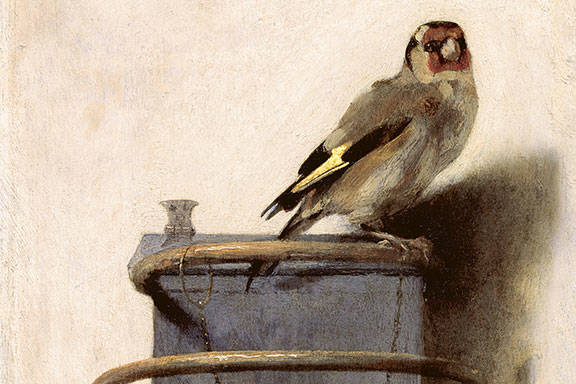‘It’s always special to see works from the Mauritshuis in the context of a different collection’, says Mauritshuis Director Emilie Gordenker. ‘We have worked together often with the National Galleries of Scotland, as we did in 2014 when we showed Titian’s Venus Rising from the Sea (The Birth of Venus) from their collection in our Prince William V Gallery.’
The Goldfinch is one of the rare works by Carel Fabritius to have survived. The painting is a touching portrait of a little bird sitting on its feeder, attached by way of a chain to its claw, standing against a white plastered wall. The goldfinch is characterised by red markings on its head and the bright yellow stripe on its black wing. Goldfinches, also known in Dutch as ‘ water drawers’ (putters), were often kept as pets in the seventeenth century. They owe their nickname to the fact that they could be taught to draw water from a bowl with a bucket, the size of a thimble. Fabritius’s exceptional depiction was probably intended as a trompe l’oeil, an optical illusion. It is possible that the painting was meant to be hung high up on a wall, as the goldfinch is depicted as seen from below. At first sight it must have looked like a real little bird.


